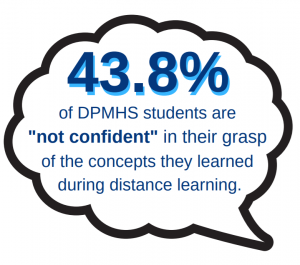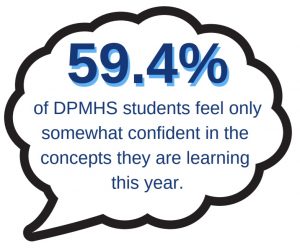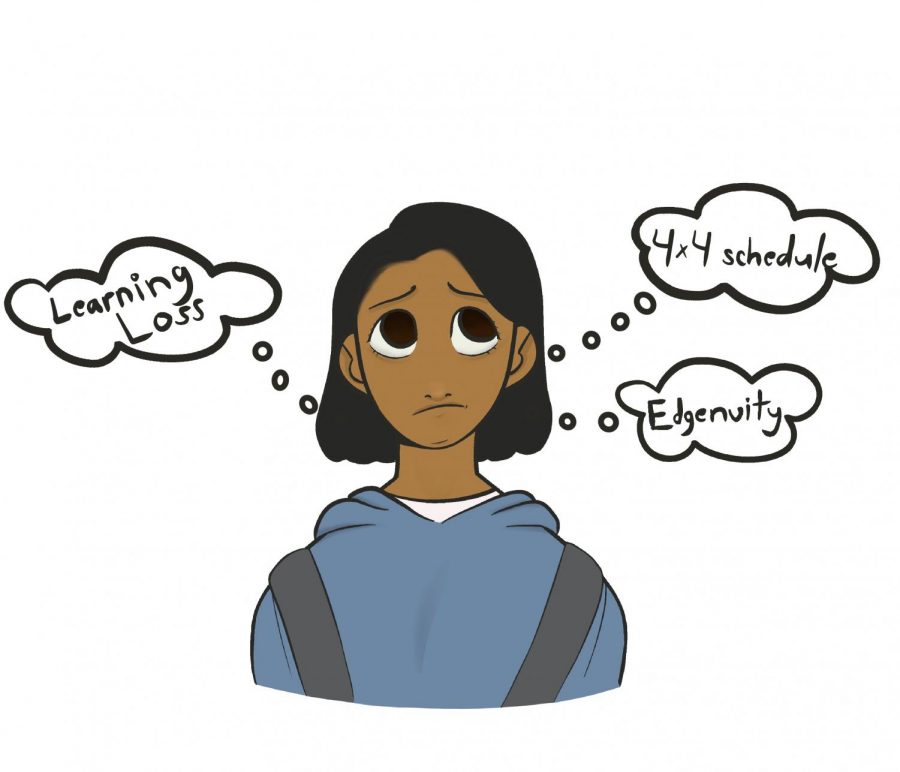Learning loss due to distance learning is still affecting students and needs to be addressed.
LAUSD must provide resources to remedy reality of learning loss
October 14, 2021
After a month of in-person learning, the sight of bustling hallways, energetic basketball games and lively classrooms makes it tempting to believe that the effects of distance learning are behind us. However, pandemic-induced learning loss still has a colossal impact on students that needs to be remedied.
Distance learning took a dire toll on students’ academic progress and understanding of concepts. Students’ mental health was also negatively impacted, exacerbating learning loss. Although teachers are trying to help students catch up, Los Angeles Unified School District (LAUSD) needs to provide more comprehensive support.
The severity of learning loss among LAUSD students is shocking. According to a May 2021 survey of 1,309 LAUSD teachers conducted by the LAUSD Independent Analysis Unit (IAU), half of teachers indicated that “fewer students met or exceeded grade-level standards” during distance learning compared to previous years. In addition, according to the Los Angeles Times, two in three students fell behind in math and literacy.
Not only did students have difficulty understanding depth of material, they also weren’t taught the same breadth of material as in previous years. LAUSD switched to a special block schedule during distance learning that significantly decreased the amount of synchronous instruction students received each week. This, along with other pandemic-related factors, led to only 17% of teachers reporting that they “taught nearly all of the formal curriculum they usually taught,” according to the IAU survey.
Another factor that contributed to learning loss was low student attendance. LAUSD used the online platform Schoology as the primary way for students to access their classes. According to an analysis by the IAU, an average of only 36% of high school students in the spring of 2020 and 67% of high school students in the fall of 2020 actively engaged in Schoology each day.


Learning loss is affecting a large group of Daniel Pearl Magnet High School students as well. According to a survey conducted by The Pearl Post, 43.8% of DPMHS students are not confident in the concepts they learned during distance learning and another 37.5% are only somewhat confident. This can largely be attributed to a lack of interaction between students and teachers and the use of Edgenuity, a virtual learning platform that was used by many DPMHS teachers. Edgenuity provided poor instruction and tedious lessons, worsening students’ lack of motivation.
Despite extensive evidence of learning loss, some prominent figures argue that learning loss did not occur. For example, in an interview with Los Angeles Magazine, United Teachers Los Angeles (UTLA) President Cecily Myart-Cruz said, “There is no such thing as learning loss. Our kids didn’t lose anything. It’s OK that our babies may not have learned all their times tables. They learned resilience. They learned survival. They learned critical-thinking skills.”Myart-Cruz’ argument not only ignores district data, it also disregards the long term effects of learning loss on students, especially high school students. Learning loss is more than the temporary setback of a student not learning their times tables. Learning loss is the 40,000 current LAUSD high school students who are at risk of not earning their diplomas, according to the Los Angeles Times. Myart-Cruz is clearly making excuses for the union, but it’s long past time for teachers and administrators to acknowledge the damage that has been done and find ways to fix it.
The consequences of learning loss can no longer be prevented, but they can be minimized. At a school level, DPMHS should continue to support teachers who are implementing mastery grading, which allows students to earn higher grades by showing improvement, even if they didn’t earn a high grade initially. One example of this is allowing students to earn some points back on tests by correcting answers they got wrong. This allows students to learn from their mistakes and learn at their own pace, mitigating the effects of learning loss.
At a district level, LAUSD needs to allocate additional funding toward tutoring for students who are struggling and credit recovery options such as summer school. Edgenuity should no longer be used by the district in any capacity. Most importantly, lawmakers, administrators, leaders and teachers should listen to student feedback and work with students to move forward. We can counteract learning loss, but we need to work together to implement comprehensive solutions.

